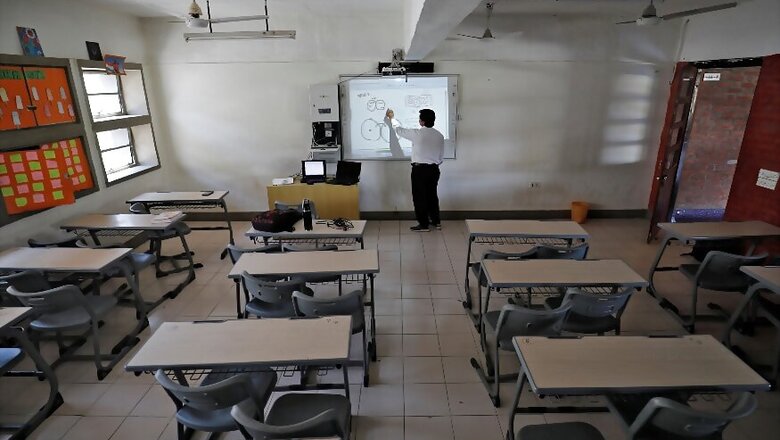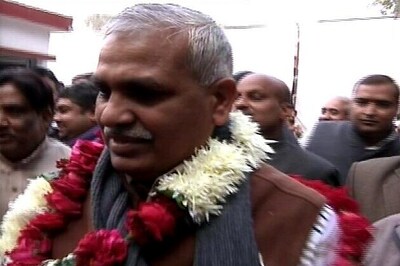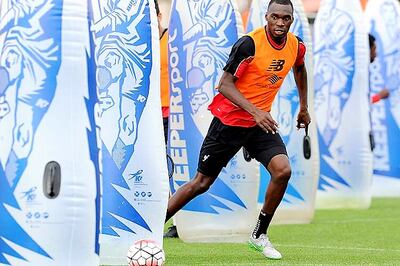
views
As students struggle with limitations stemming from the online modes of learning, the Ministry of Education directed the NCERT to form a committee to conduct a survey, which found “alternative modes of learning do not ensure equitable quality learning for all students.”
The Ministry of Education on Wednesday released Students’ Learning Enhancement Guidelines after the alternative modes of learning and teaching were adopted due to the closure of schools to arrest the spread of Covid-19.
This disparity in alternative modes of learning is due to unequal distribution of time of teachers, students having differential access to technological devices, and lack of support for learning at homes in several cases. “As a result, closure of schools is likely to lead to loss of learning and deficiencies in the achievement of students' learning outcomes.”
The committee consisted of academic and curricular experts drawn from NCERT, NIEPA, CBSE, KVS and NVS. The Committee conducted a survey in KVS, NVS and CBSE schools for collecting information about various digital modes being used by students to receive online education and their concerns regarding children not having digital devices.
According to the survey focusing on the gaps and/or loss of learning among students, during and after the lockdown, 50% students are facing problems. “About 20-30% stakeholders shared that they had a difficult experience and about 10-20% said that it was burdensome for them.”
The reasons for hindrances according to the survey are “poor internet/network connectivity/signal”; “Sharing and use of contents for on-line classes was difficult through mobile phones”.
Students also “lack knowledge of using devices for effective educational purposes. Teachers were not well-versed with online teaching methodologies.”
Despite the government push, “about half of the students stated that they did not have the school textbooks” and even though the e-text books are available on NCERT website and DIKSHA, the probable reasons behind this feedback are “students are used to studying from the hardcopy of the textbooks; lack of awareness regarding the availability of the e-textbook; paucity of devices with students and teachers; lack of orientation of students and teachers in on-line mode of teaching/learning”.
During the survey, 28% of respondents said one of the major concerns hindering the teaching-learning process is due to “intermittent/ lack of electricity”. Besides, approximately “27% of the students mentioned the non-availability of smartphones and laptops”. The respondents said that there is an absence of enriched interaction between the teacher and the students.
The findings revealed that about 60-70% of the participants (students, teachers, parents and school principals from across KVS, NVS and CBSE) responded positively to the teaching and learning process during COVID-19, they found it “joyful and satisfactory”.
Reasons identified for the satisfaction in learning through online mode are: 46.8% learnt through their own schedule; 46.4% teachers had planned interesting activities; 34% parents’ participated in the teaching-learning process; many students found the online mode of teaching to be a new and innovative method, wherein they got a lot of interesting activities from their teachers, which helped in breaking the monotony during the period of lockdown.
“With the online education and activities, students had the support of their parents in their learning. Students could self-analyse their weak areas and had enough time to work on those areas with the help of the content available on the web or YouTube videos,” said the survey.
The survey found that the maximum number of stakeholders opted for mobile phones as a medium for teaching-learning during the COVID-19 period. Laptops were the second most favoured option amongst teachers and principals. Despite the push by the government “Television and radio were the least utilized devices for the teaching-learning in the pandemic situation.” Students majorly rely on mobile phones for the continuation of their teaching-learning. And about 36% of the students used the textbooks and other books available with them.
Online mode is making learning of mathematics most difficult according to the survey that finds our subject wise difficult areas: “The majority of the stakeholders pointed out that mathematics as a subject was difficult to learn via online medium. Mathematics contains a number of concepts that require interaction, continuous support, monitoring from the teacher and these aspects were lacking in the online mode of teaching,” said the guidelines. This was followed by learning of Science, which was identified as the subject of concern since it “contains several concepts and practical experiments which could only be done in the laboratory under the supervision of the teacher.” It was difficult for students to grasp Social Science and languages through online classes.



















Comments
0 comment